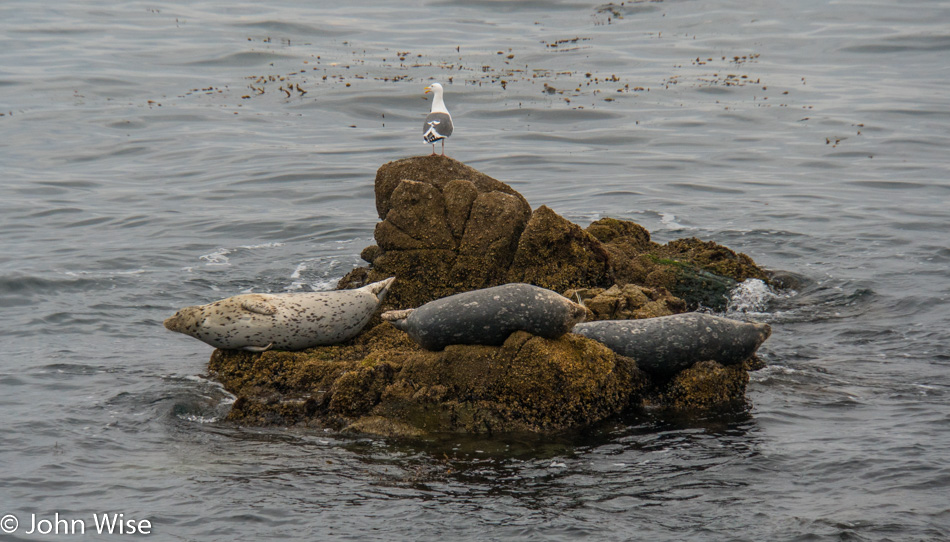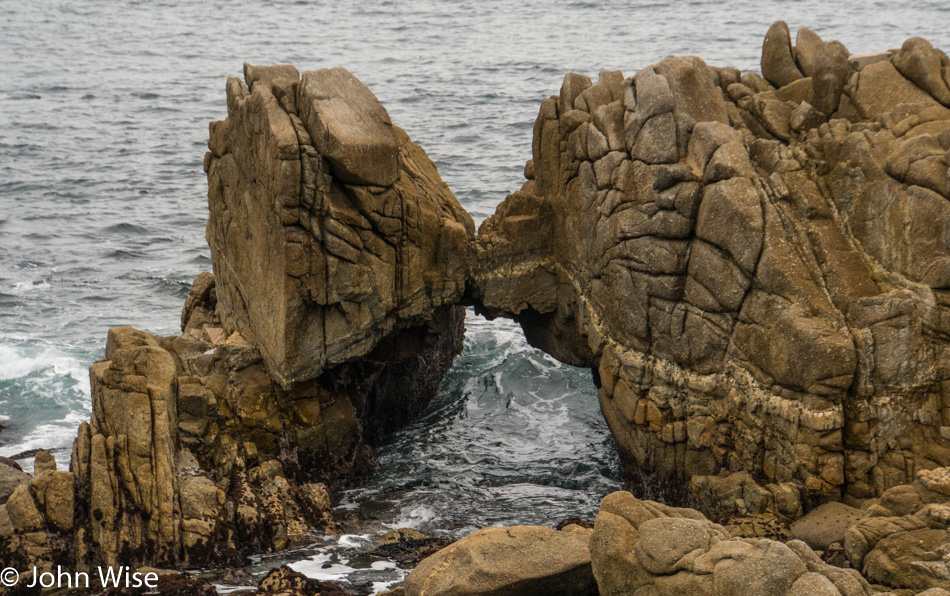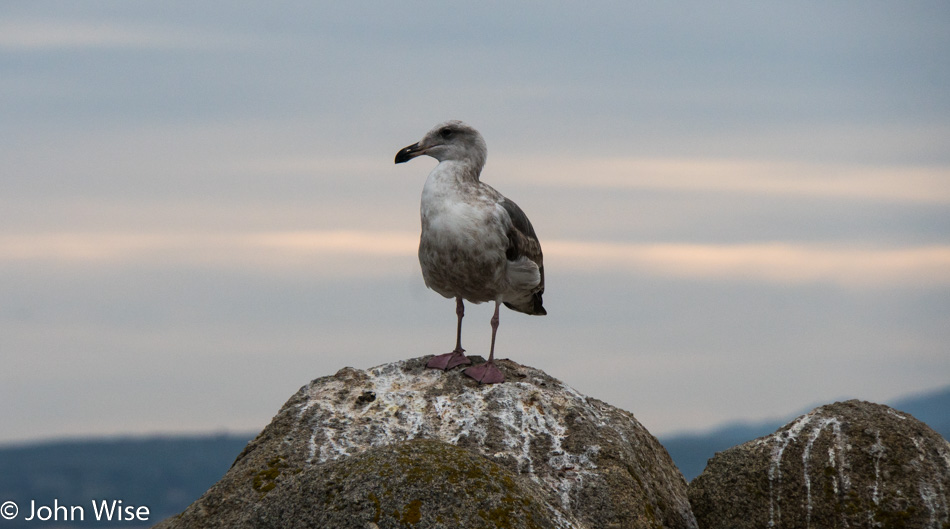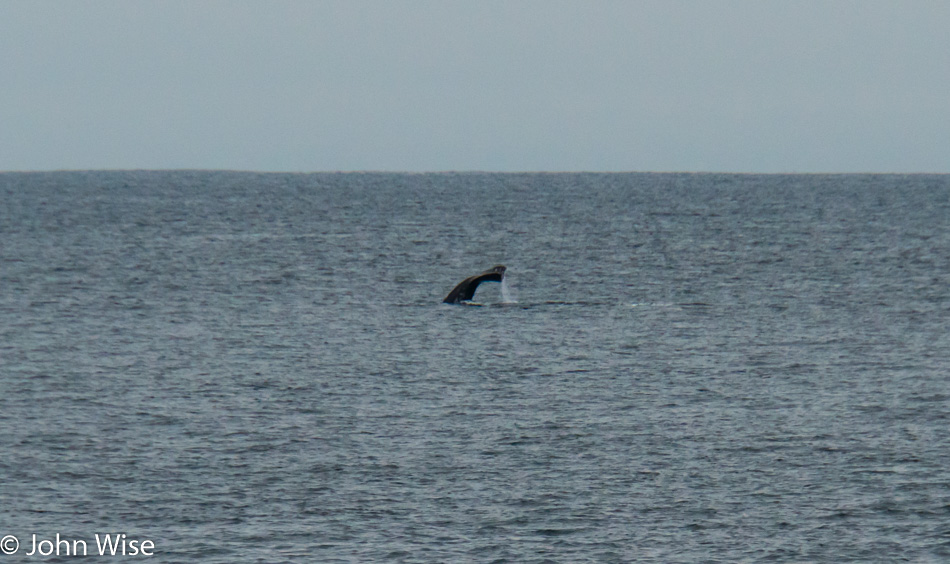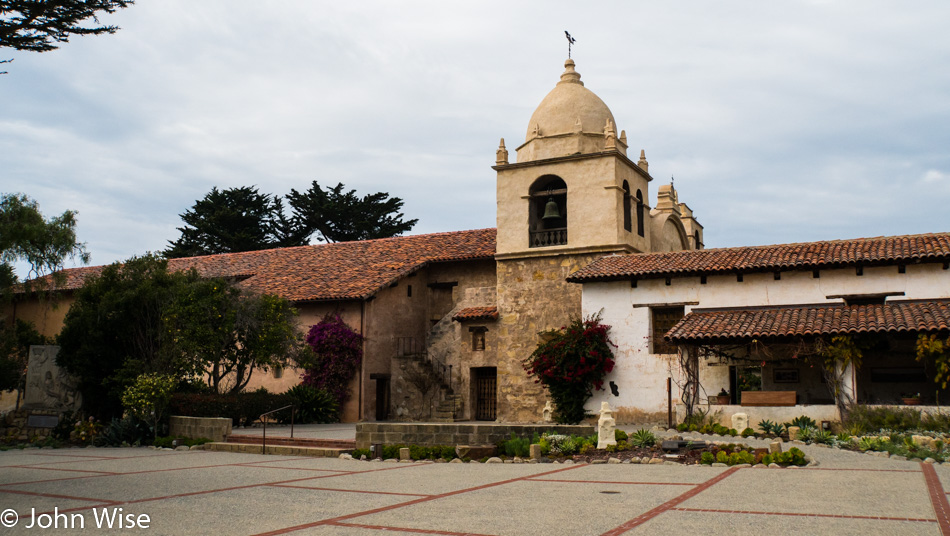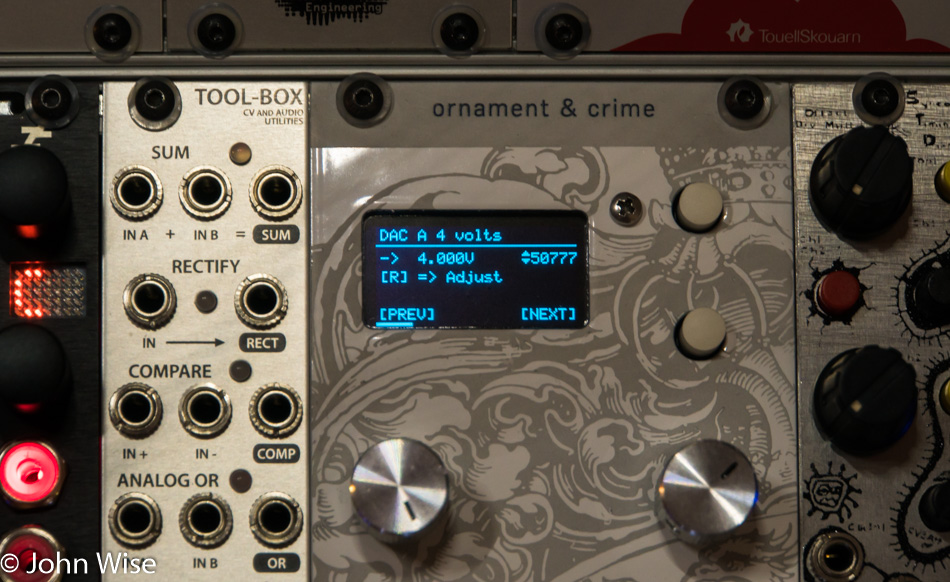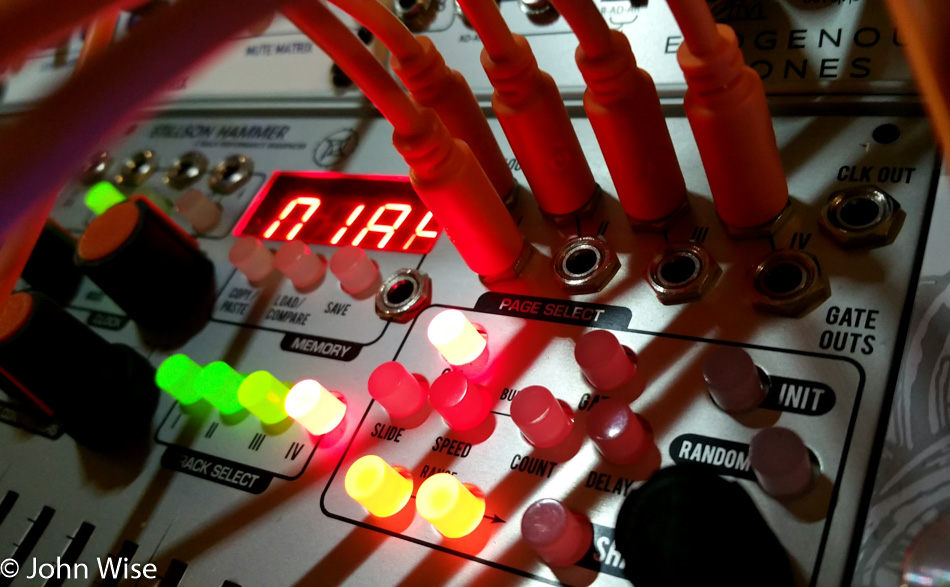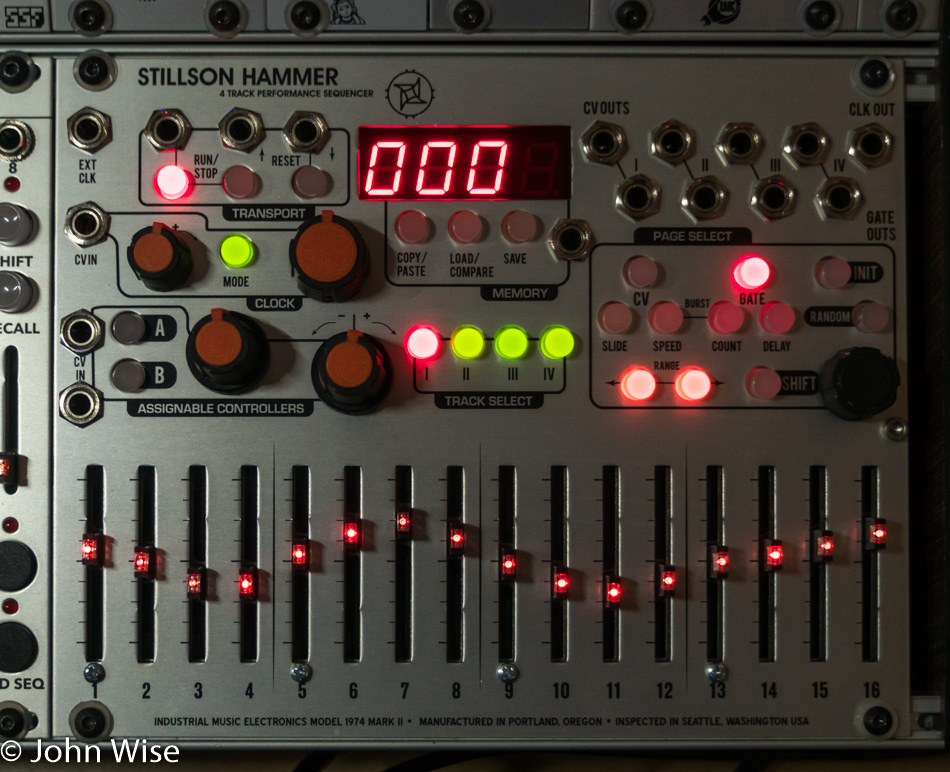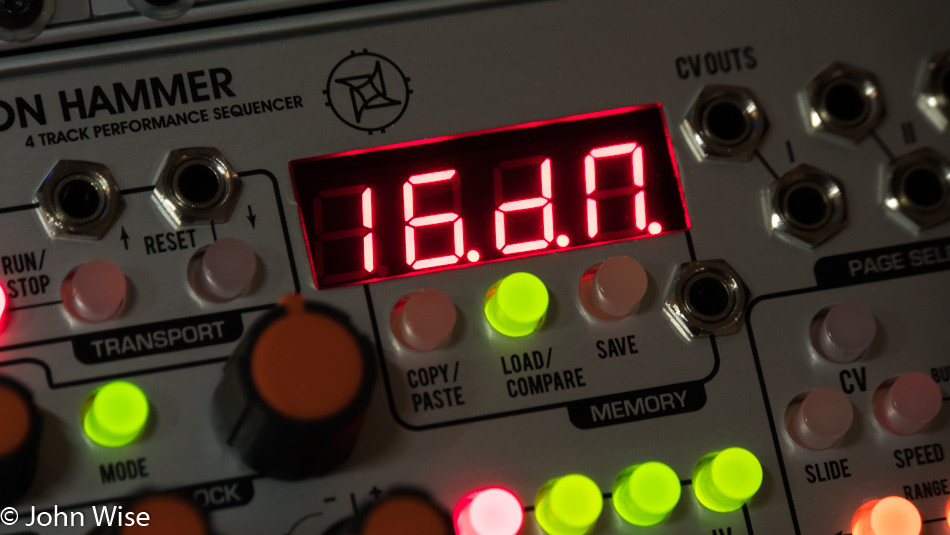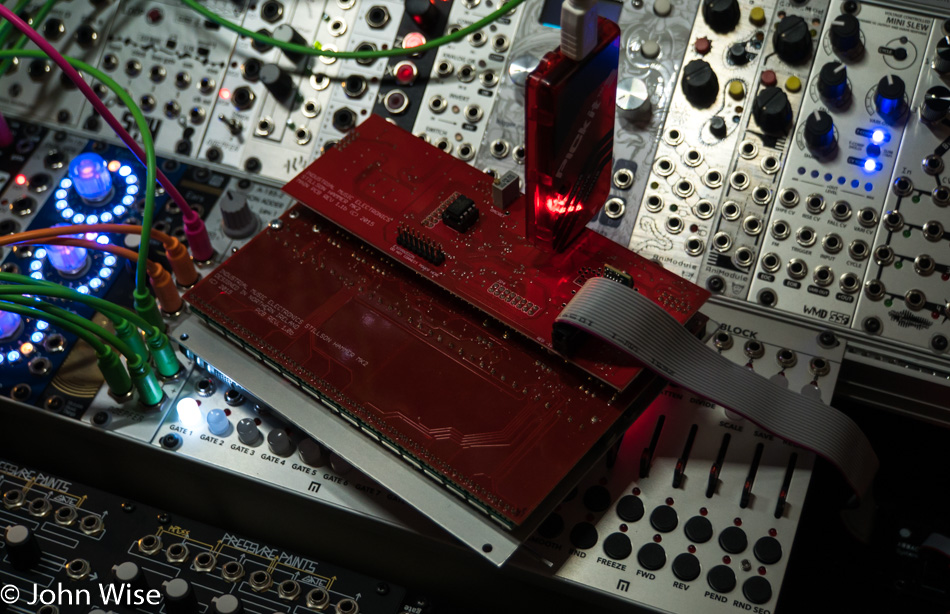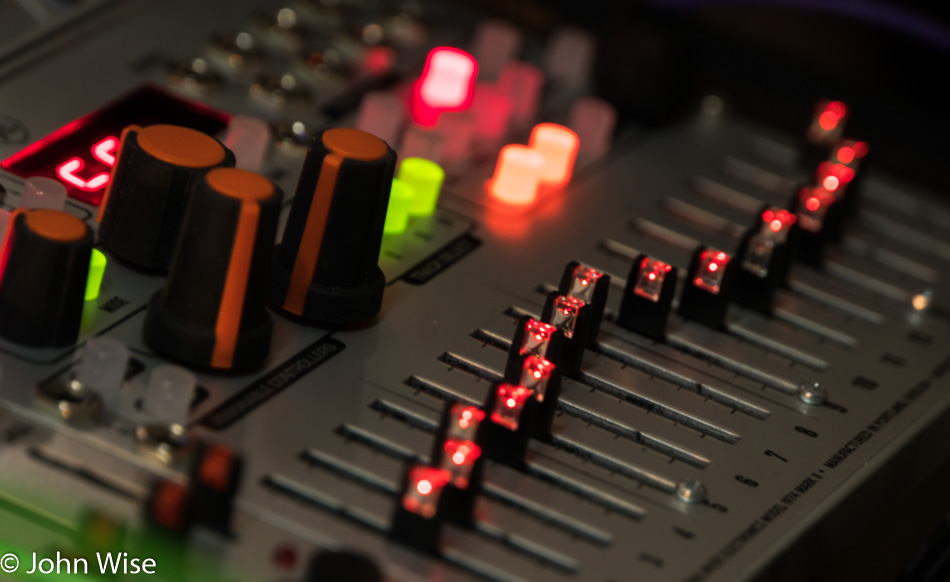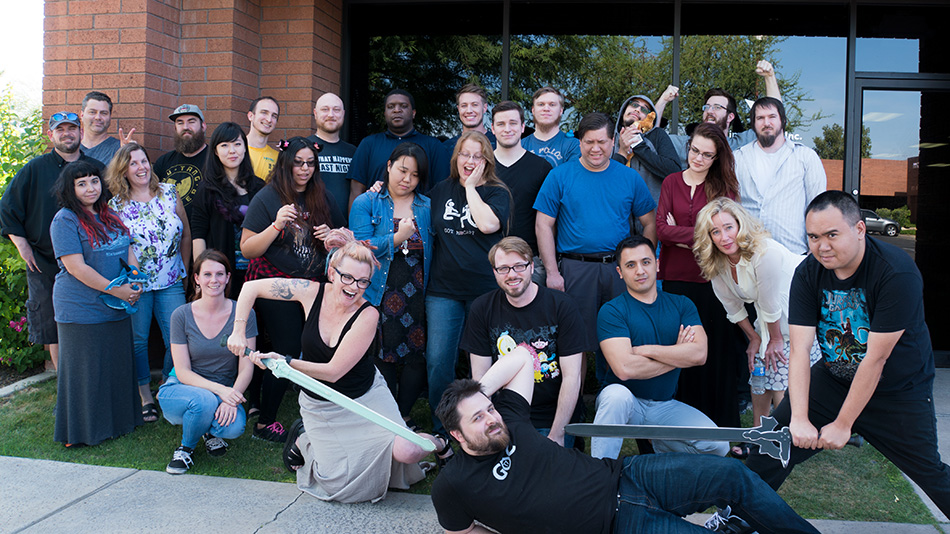
Drats, we stayed at a place without a chimney, so Santa couldn’t deliver the goods; probably a good thing because just as I don’t need any new synth modules, Caroline has enough yarn. What we can never have enough of are beautiful sunrises and great breakfasts. Lucky us, the Old Monterey Cafe was open for breakfast today, only not at 6:45 as the busser told us the day before, more like 8:00. So we took a walk across the street to a bagel shop for a cup of coffee as we were willing to wait.
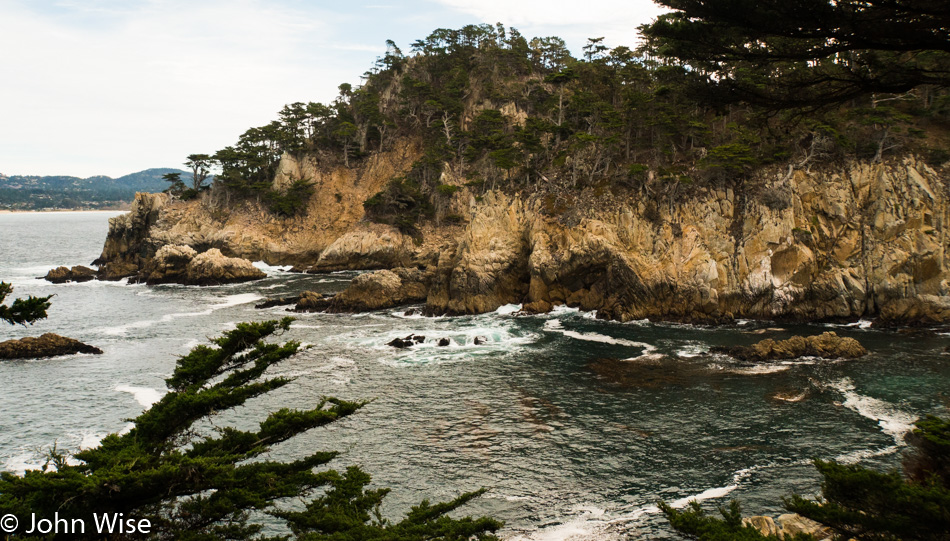
We’ve been up here on the central coast countless times, but we’ve never stopped at Point Lobos State Natural Reserve due to a gazillion cars parked roadside, as the parking lot is always full. At 9:00 on Christmas Day, it turns out that we are some of the first people in the reserve. This was the first view that opened up on the trail.

Not but a few more steps up the trail, and the power of the ocean is on display a few hundred feet below us. While the ocean was calm when we arrived a couple of days before, it’s churning today. Today is also the beginning of my sense of vertigo kicking in as we encounter more than our fair share of precipitous drops and sheer cliffs that rouse the electrifying sense of deleterious swirling going on in my derriere; well that’s just where it happens!
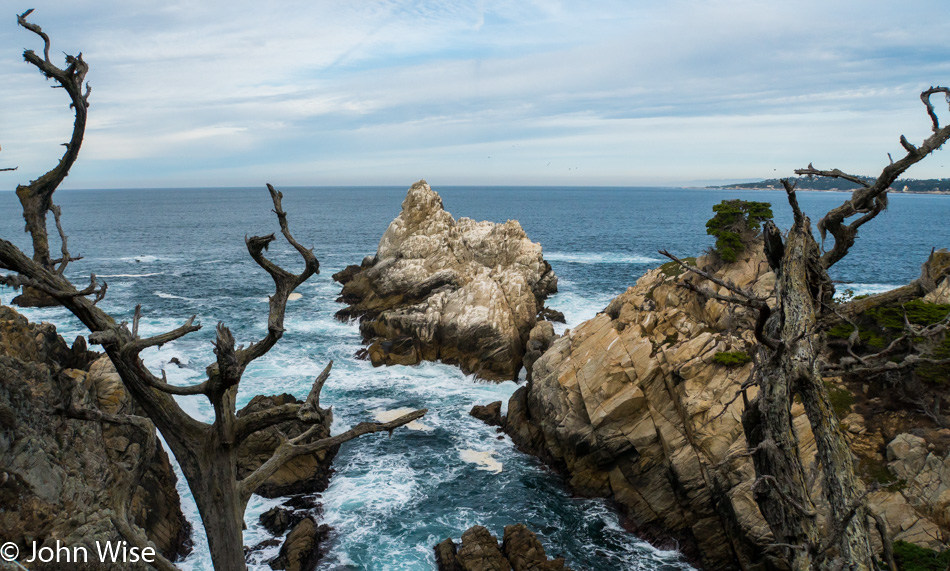
The plan is to have no real plan; as we were driving down Highway 1 with the idea we’d go south, that was about as far as we’d gotten with having a plan. When Caroline saw the sign for Point Lobos, she suggested that maybe today was a good day to visit, turns out she was right. Now that we’re here, we’ll see where the trail takes us.
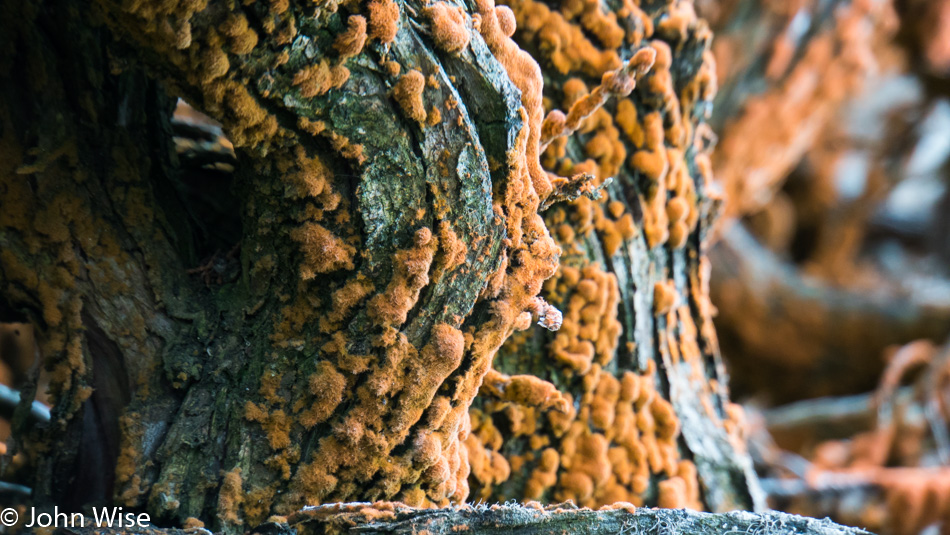
So a plan has developed, and it dictates we go slow, real slow. Our inspiration comes from this algae (Trentepohlia) that grows slowly and does not sway in the wind, migrate, or retreat in the rain. They just hang on to the surface they are attached to and imperceptibly spread out and thicken. While I could easily look it up while I’m here writing this, I’m leaving a note to my future self reminding me that I didn’t search for an answer and that I may still want to know what purpose these algae and the lichen they often live with symbiotically serve?
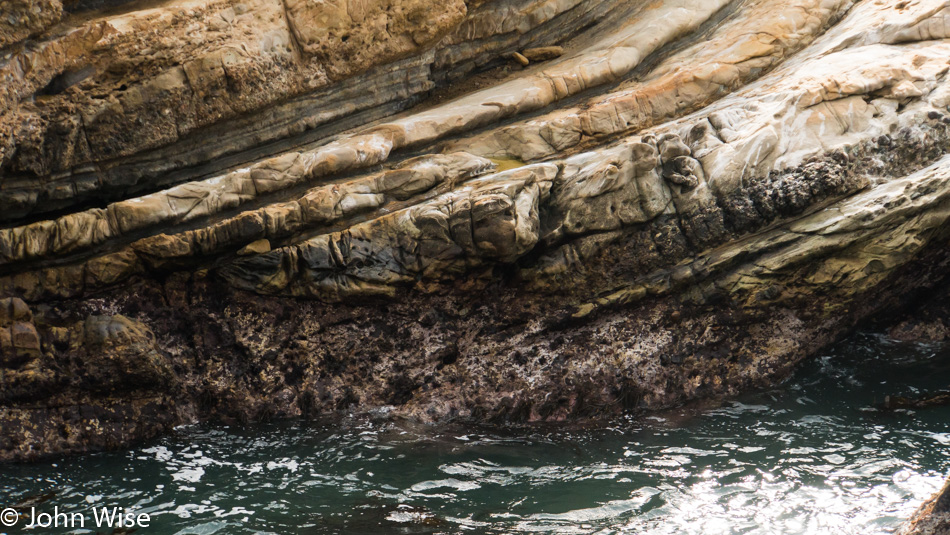
Dear Geologists, when might this rock have been uplifted? Its creases are perpendicular to the rock itself instead of the ocean, and if I’m not mistaken, aren’t those creases caused by water running over the rock surface?

The waves roll in with a swell that, in some respects, appears relatively slow until it is compressed into something unmovable, and then its true force becomes apparent. As the water reacts to not having enough space within the volume it occupies, it moves in an unobstructed direction, and in this case, that means going straight up. Air is simultaneously displaced, often with a whoosh, and water escapes as mist and spray in whichever direction the physics of the environment and moment allows. We are left with a beautiful explosion and thunderous clap of water; the rocks are left with just a little less material as erosion acts on them to rearrange their structure into something different, and memories are built and changed with nature’s infinite unfolding.

Occasionally, we, too, are part of the landscape.
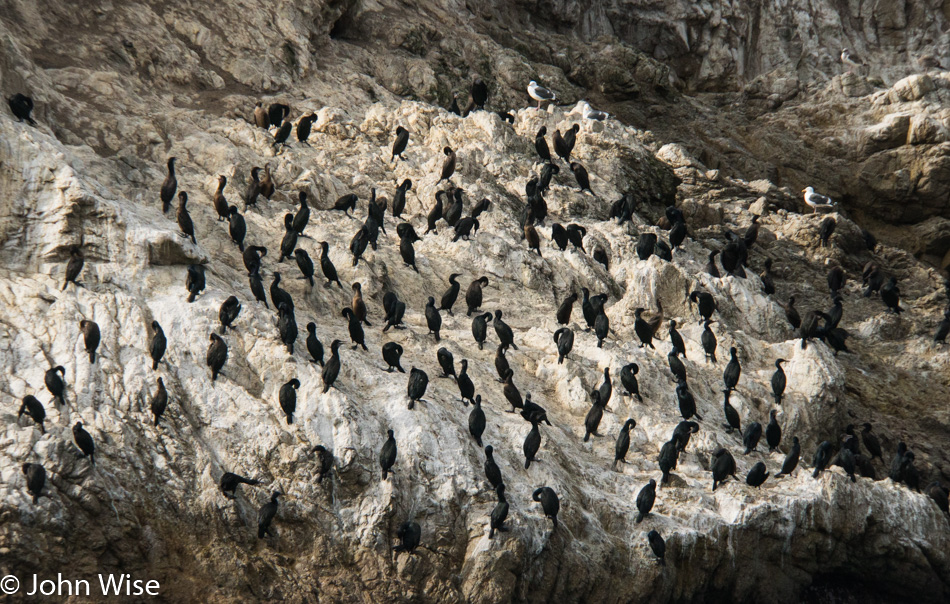
We’ve reached Bird Island near the end of the trail here at Point Lobos State Natural Reserve. The birds we are looking at are cormorants, except for those three seagulls having identity issues. For a moment, I think about their freedom, certain they don’t have opposable thumbs and that their food is always cold, but they get to warm up on an island not fit for humans without deploying a serious amount of dynamite. Their home is found wherever they happen to land. Their buffet is bountiful and free, only requiring them to spot it and then fall out of the sky into the water to retrieve it. So as long as they avoid the hawk, eagle, and us humans, they are free to fly, walk, swim, and eat without systems where the exchange of time, taxes, and mental turmoil impinge on the freedom of us humans without the means to afford some of the freedoms the more fortunate can play with.
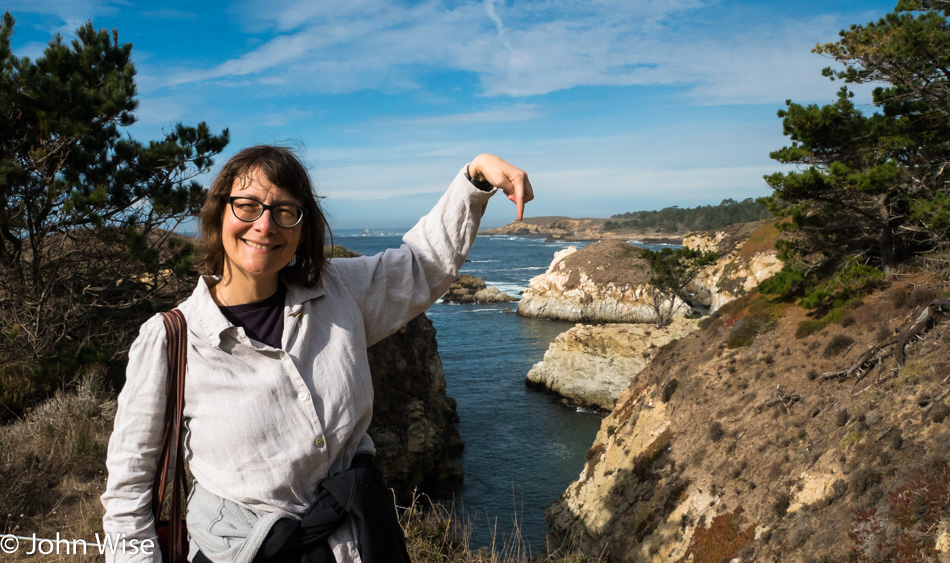
Caroline is pointing to the place where our trail will take a final turn inland and back to our car. It’s been a great walkout here as we stroll along the ocean, lost in the beauty of it all and entertained by our thoughts or lack thereof.
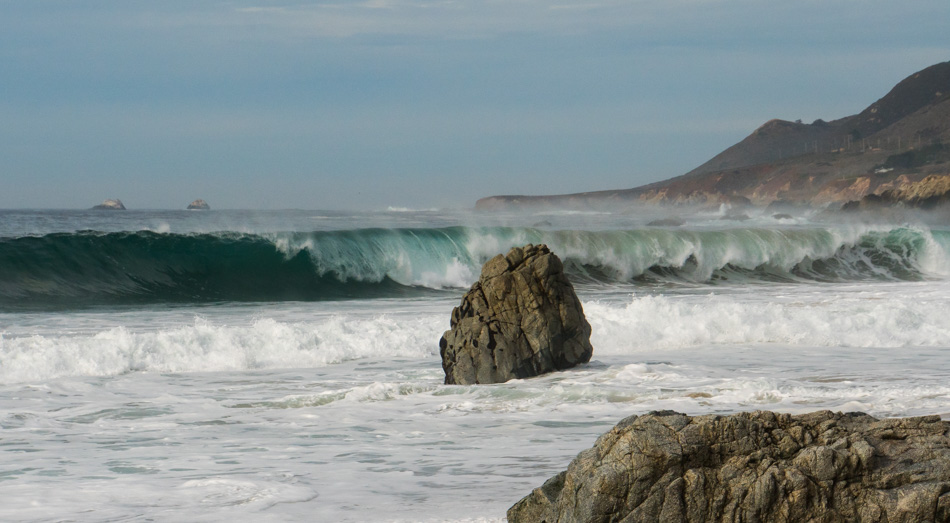
Too late to return north as we’d figured we would likely be somewhere on the road stuck in traffic in Carmel instead of enjoying the sunset, so we went further south to Garrapata Beach. This is our favorite beach if one could have a favorite beach as it seems that all beaches to some degree are our favorite. What makes this one unique is the quick break of the waves close to shore after welling up to heights that are taller than we are and then some tall cliffs behind us that must capture the sound of the crashing waves because it sounds like a freight train rumbling through here. In our travels from the coast of Alaska and Hawaii, the North Sea to the Atlantic, and the Gulf of Mexico to the Pacific, this beach has stood up as having the loudest, most thunderous waves, and for that reason, it is exhilarating. For size, volume, and speed the North Shore of Oahu wins that contest.
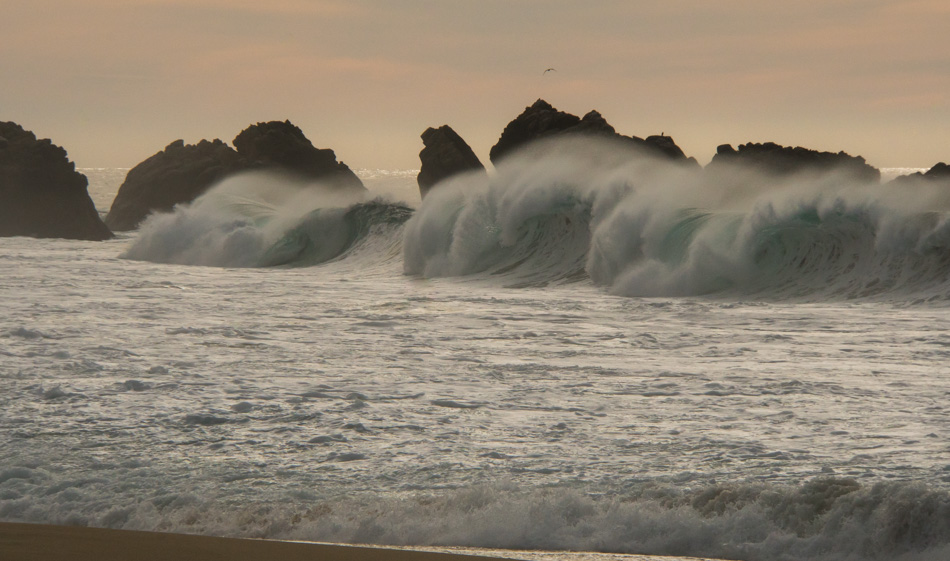
So this was our Christmas day: a slow walk in the universe of infinite coastal beauty without the emotional and consumer drama that seems to bog people down in obligations instead of true celebration.
